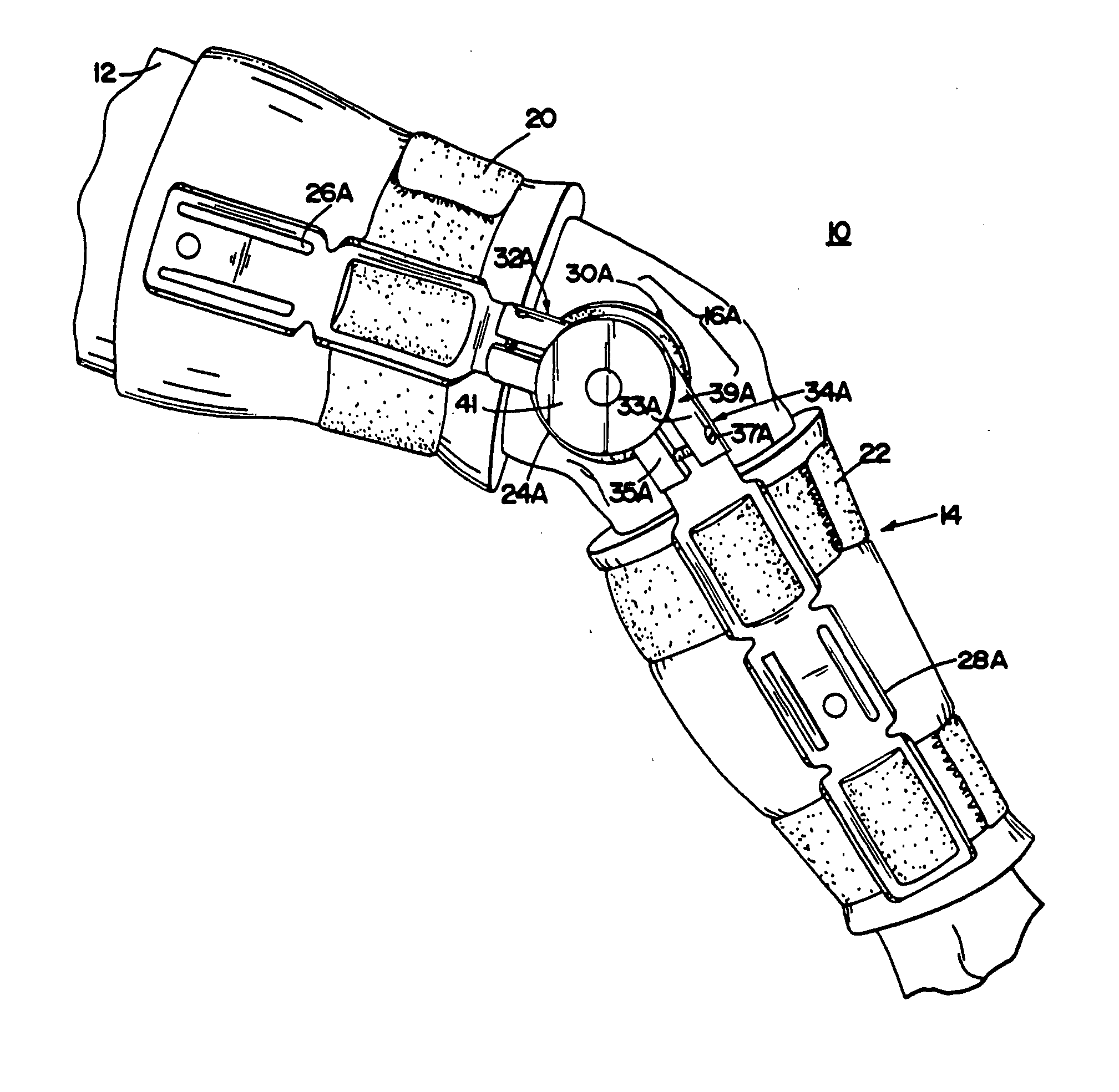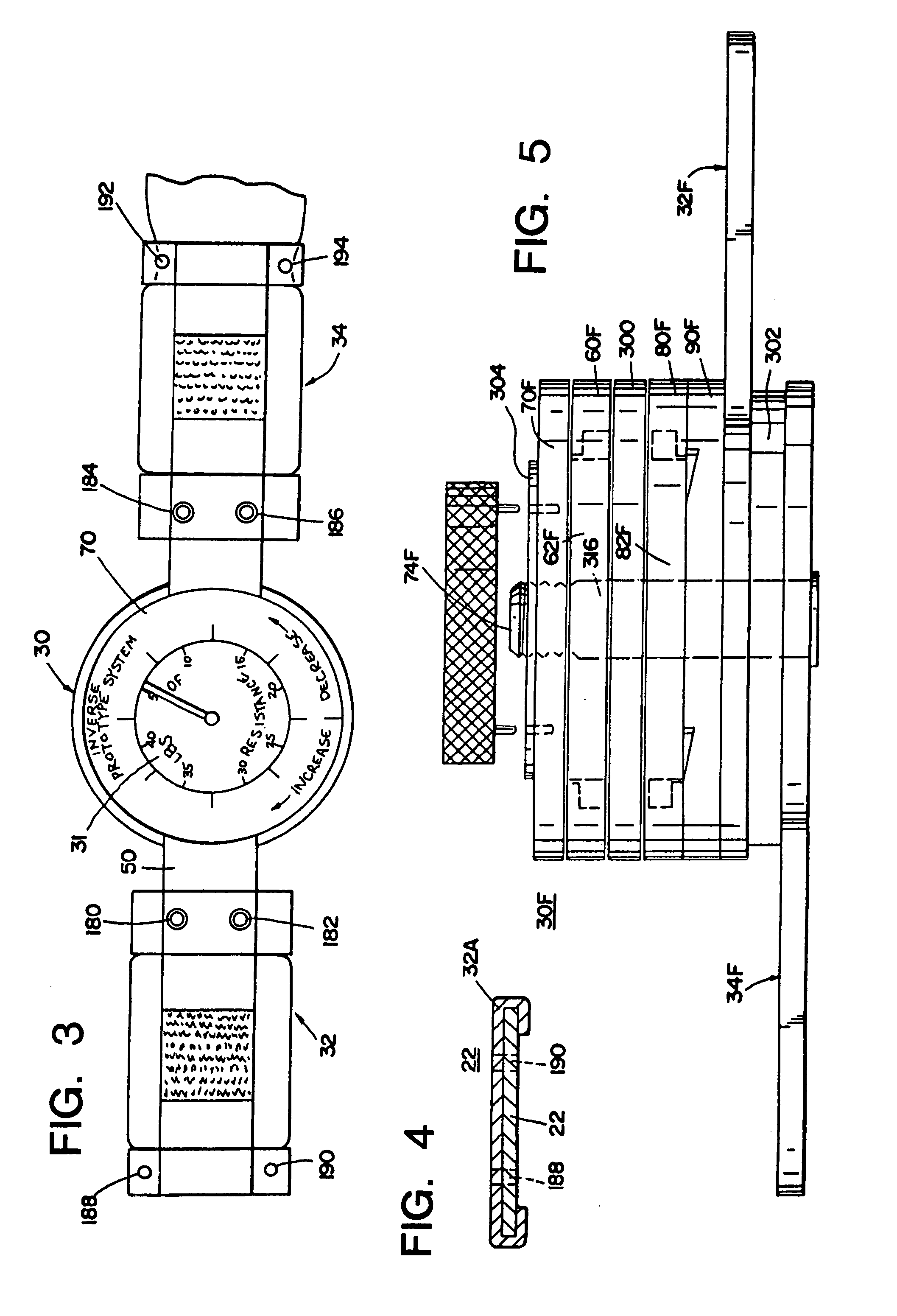Exercise apparatus and technique
a technology of exercise apparatus and muscle, applied in the field of exercise apparatus and technique, can solve the problems of not providing a controlled level of muscular exertion, the disadvantage of expensive equipment, and always providing the same resistance when moving in any direction or location, so as to reduce patellofemoral discomfort, avoid irritation or damage to the body, and improve mobility
- Summary
- Abstract
- Description
- Claims
- Application Information
AI Technical Summary
Benefits of technology
Problems solved by technology
Method used
Image
Examples
Embodiment Construction
[0146] In FIG. 1, there is shown a fragmentary, perspective, partly-exploded view of an exercise assembly 10 mounted to a limb 12. The exercise assembly 10 includes a limb brace portion 14 and first and second exercise modules 16A and 16B, one on each side of the limb brace portion 14 (only 16A being shown in FIG. 1). In the preferred embodiment, the limb brace 14 is a standard brace that is not a part of the invention by itself except insofar as it cooperates with one or more removable exercise modules such as the exercise modules 16A and 16B.
[0147] The removable exercise modules 16A and 16B mount to the limb brace portion 14 which in this embodiment is a leg and thigh brace to control the resistance needed by limb 12 to move the brace portion 14 for limited movement about a knee. In the preferred embodiment, the resistance to movement is provided by frictional resistance.
[0148] The limb brace 14 includes a first support means 20, a second support means 22 and two pivotal joints ...
PUM
 Login to View More
Login to View More Abstract
Description
Claims
Application Information
 Login to View More
Login to View More - R&D
- Intellectual Property
- Life Sciences
- Materials
- Tech Scout
- Unparalleled Data Quality
- Higher Quality Content
- 60% Fewer Hallucinations
Browse by: Latest US Patents, China's latest patents, Technical Efficacy Thesaurus, Application Domain, Technology Topic, Popular Technical Reports.
© 2025 PatSnap. All rights reserved.Legal|Privacy policy|Modern Slavery Act Transparency Statement|Sitemap|About US| Contact US: help@patsnap.com



